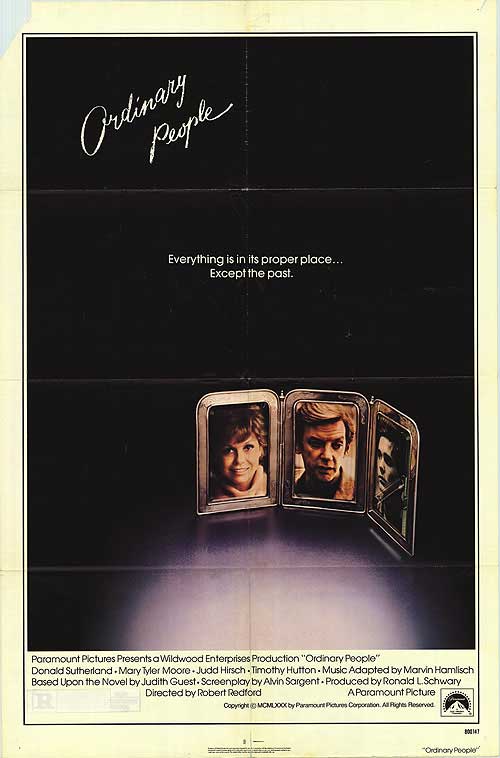
Many people say there is no wrong way to grieve. Every person mourns differently and to try to prescribe a formula that fits all is foolish. Indeed, those in mourning need to be given a great deal of grace, freedom, and patience.
However, there is one horribly wrong way to grieve, a way that can harden a person’s heart.
The 1980 Academy Award winning movie, Ordinary People, depicts the disintegration of a family as a mother struggles to come to terms with her son’s death. She attempts to carry on with life as if nothing happened, while the rest of her family suffers, copes, and adjusts.
In the climactic scene of the move, when her husband tries to compel her to talk about their loss, her solution is to “get away” for a weekend in order to have some fun. The absence of a vacation in their life, she thinks, is the problem, rather than the absence of their child.
The mother, whose family ultimately falls apart, engages in the one deadly sin of grief: she fails to face reality.
The immense pain that certainly awaits her if she chooses to acknowledge the gravity of her loss constitutes too great of a challenge. She simply cannot enter into her sorrow.
I know this challenge well. Back in 2013, my son, Cameron, died suddenly at age three. As I recount in my recently released book, Therefore I Have Hope: 12 Truths That Comfort, Sustain, and Redeem, facing the immeasurable sadness presented a daily trial in the first years. Unfortunately, you have no option. If you’re ever going to heal and progress, you must cry the tears and bear the heartache. You must process the pain.
In this way, experiencing tragedy and loss feels like waking up with running shoes on and a crowd of people racing around you. You realize that you’ve been entered into a marathon for which you never signed up (and you’re really out of shape). You have no option but to move forward and encounter the difficulty of the race or you’ll never reach the finish line, or, in the case of grief, a place of greater healing and relief.
 How does one enter into such immense sorrow, as situations such as the loss of a child, spouse, parent, sibling, or best friend? How does one revisit the intense anguish of past abuse and trauma?
How does one enter into such immense sorrow, as situations such as the loss of a child, spouse, parent, sibling, or best friend? How does one revisit the intense anguish of past abuse and trauma?
The gospel story of Jesus offers the needed hope for the journey. It also tells the truth about the challenging path we must take.
When we look at the cross where Christ was crucified, we can see the empty tomb in the background. We see a happier ending and a testament of restoration. Still, there lies the pain and torture of the cross in the foreground.
You cannot experience the healing of the resurrection without first climbing on the cross. You cannot recover from a broken leg without resetting the bone. You cannot heal from the deep wounds of life without feeling all of the sorrow and pain that reside in your heart. The only path of healing runs through experiencing the pain of your cross.
The hope of the resurrection enables you to take these difficult steps—which practically may mean going to a counselor, telling your story to a trusted person, allowing yourself to weep, or creating space to mourn. Knowing that God truly is a healer makes the pain and struggle worthwhile.
God did not leave his son on the cross. He raised him to new life. God will not leave you on your cross either. He is a redeemer who will carry you to healing and redemption.

COMMENTS
One response to “Ordinary People: The Only Possible Path to Healing in Sorrow and Tragedy”
Leave a Reply













Couldn’t watch Mary Tyler Moore for a long time after that movie, she played that part so well it was uncomfortable. Good post.